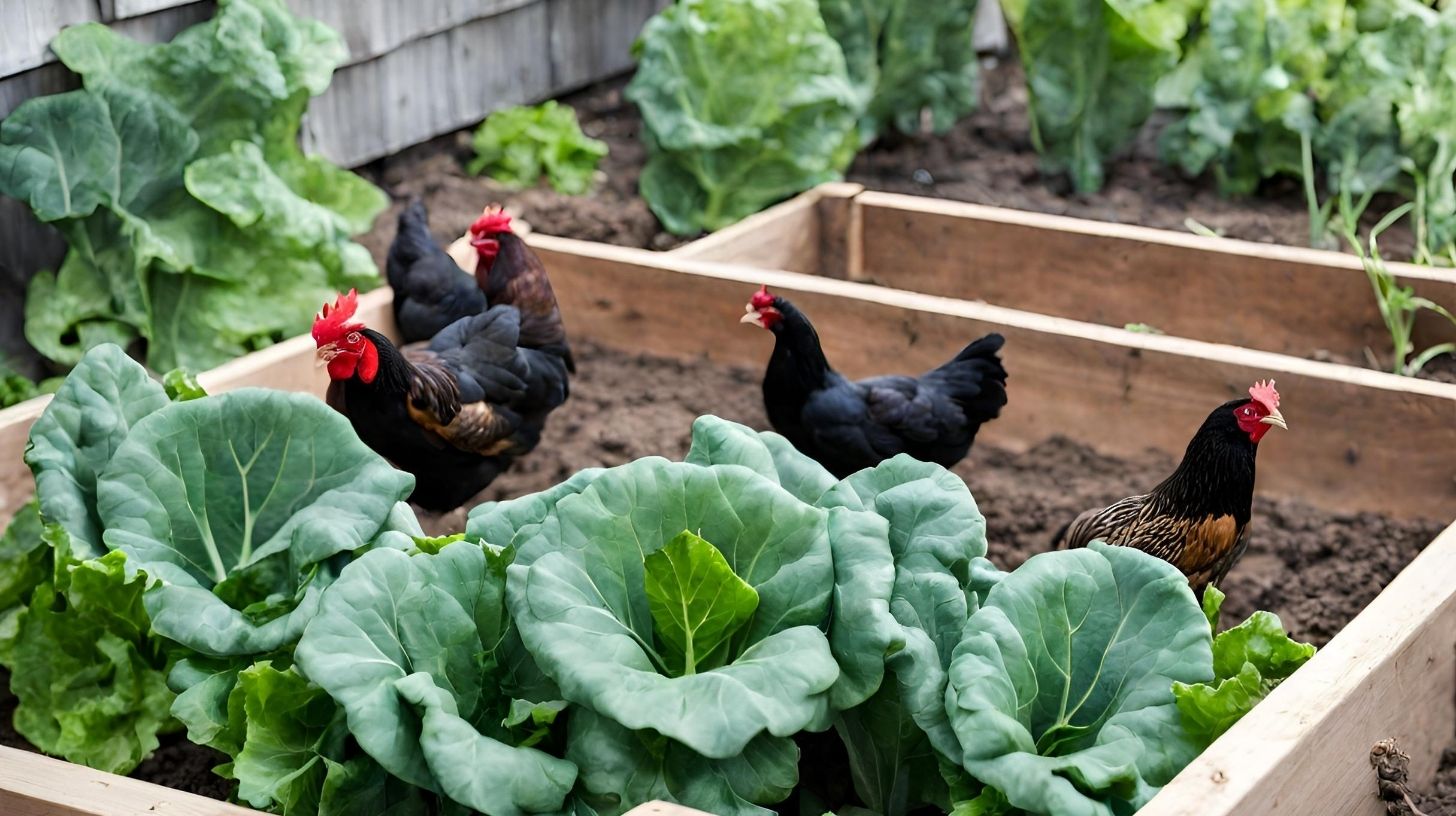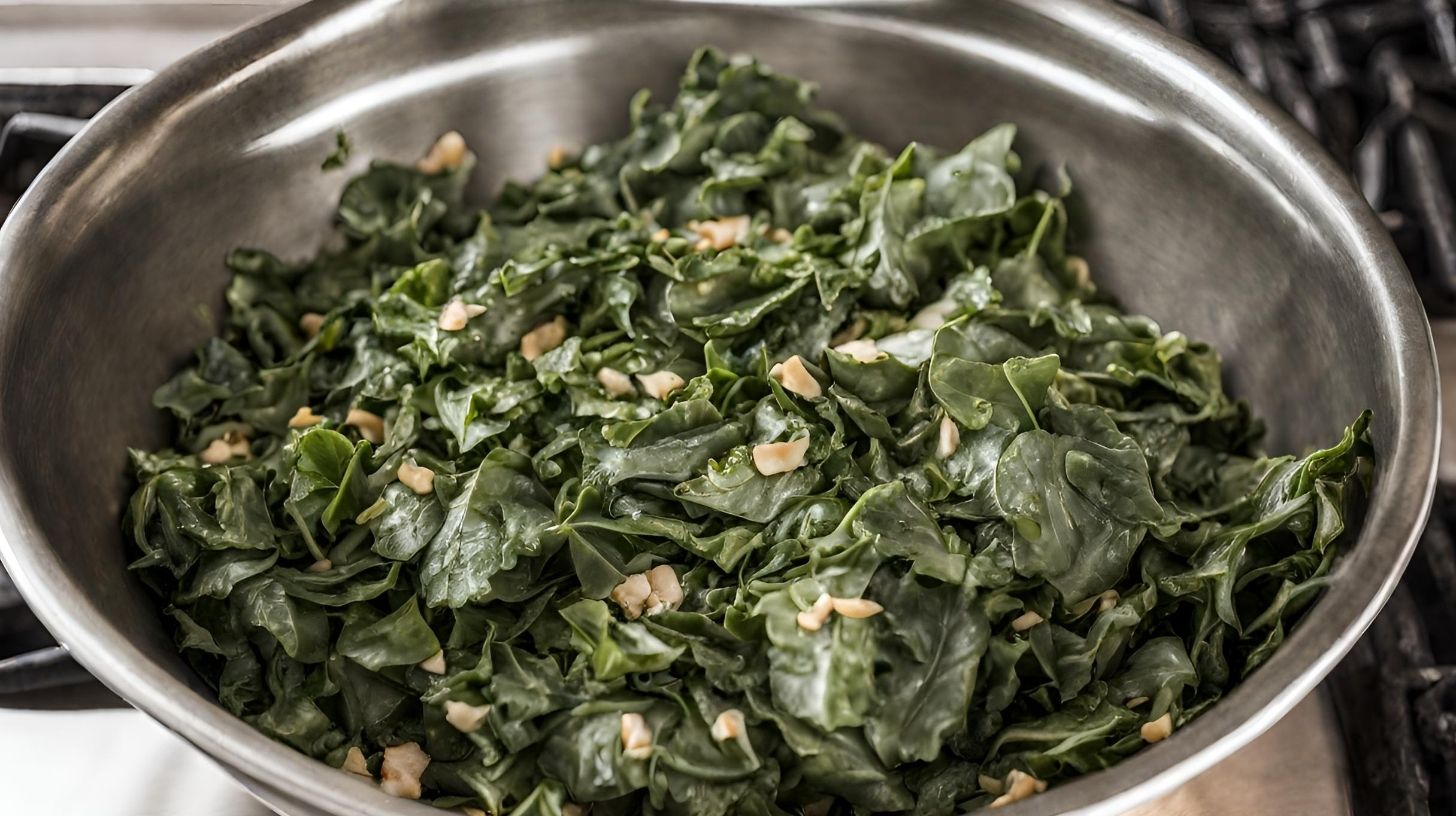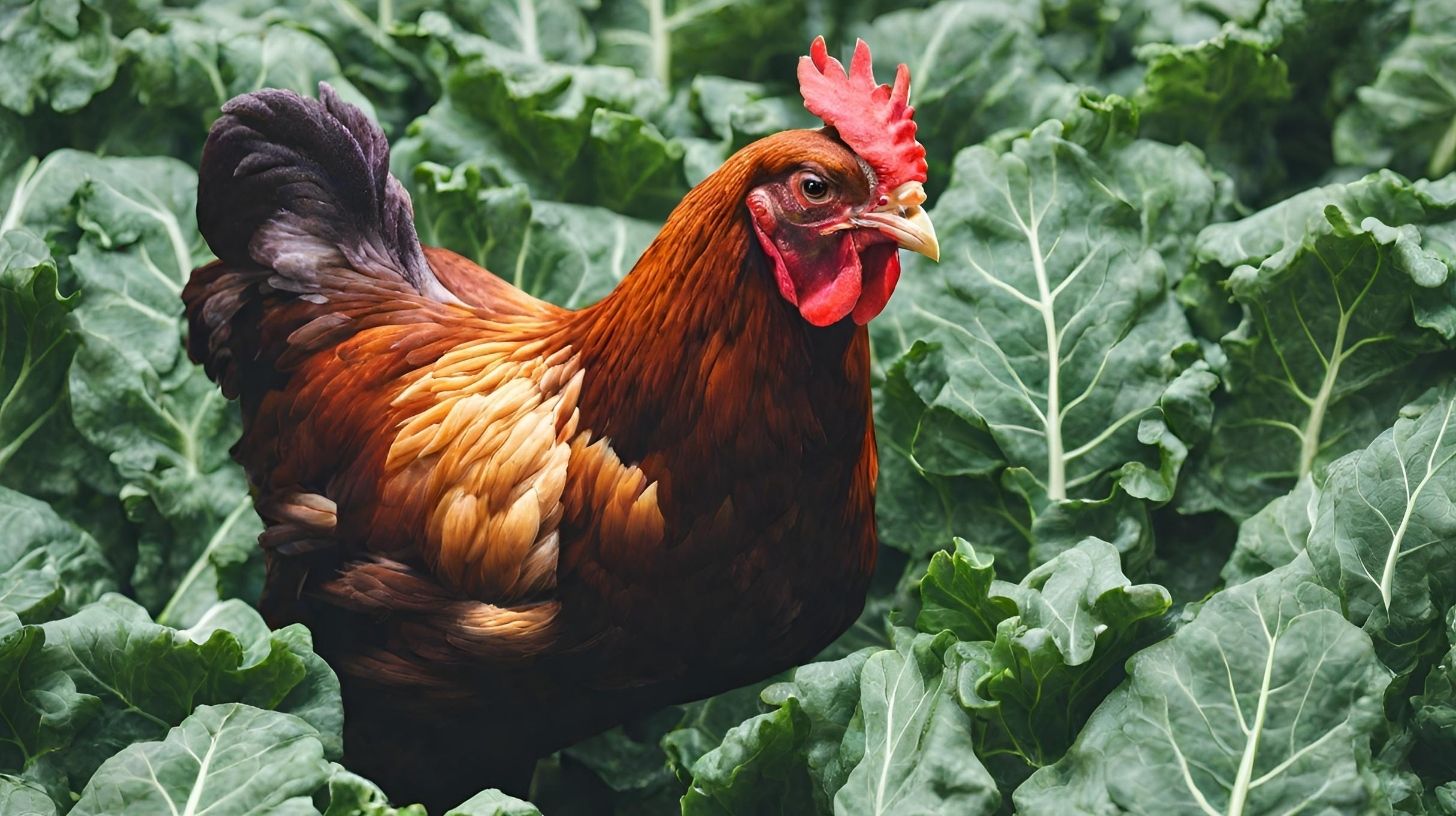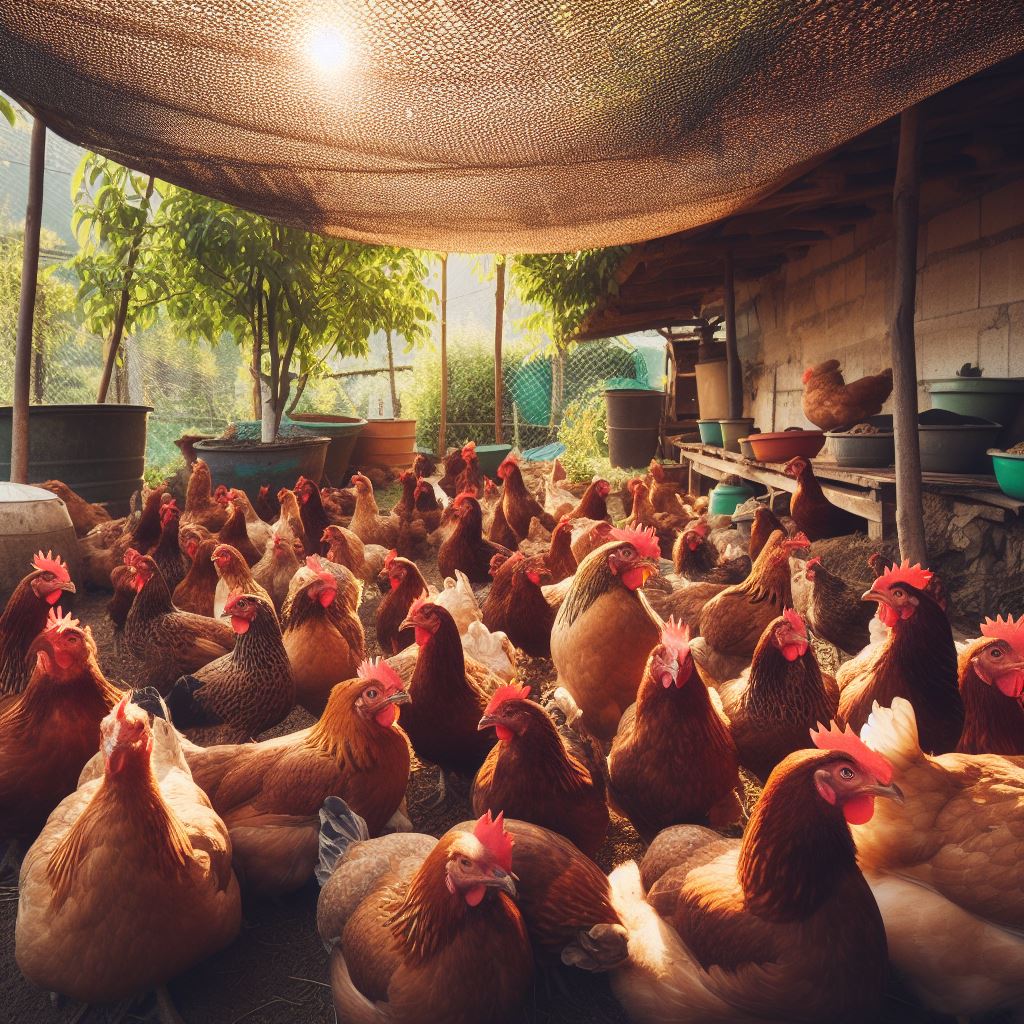Do Chickens Eat Collard Greens? An In-Depth Guide for Chicken Owners

Table of content:
- An Overview of Collard Greens for Chickens
- Benefits of Feeding Collard Greens to Chickens
- Best Practices For Feeding Collard Greens
- Potential Downsides of Collard Greens for Chickens
- How Often Should Chickens Eat Collard Greens?
- How to Prepare Collard Greens for Chickens
- Good Alternatives to Collard Greens
- Frequently Asked Questions About Chickens Eating Collard Greens
- Conclusion
Collard greens are a nutritious leafy green vegetable that can be a healthy addition to a backyard chicken’s diet. Feeding collard greens to chickens provides many benefits, but also requires some precautions. This comprehensive guide covers everything chicken owners need to know about feeding collard greens to their flock.
Key Takeaways:
- Collard greens provide many vitamins, minerals and antioxidants that are beneficial for chicken health and egg quality.
- Collard greens contain oxalates and goitrogens, so they should be fed in moderation as part of a varied diet.
- Chop collard greens into small pieces and combine with other vegetables to encourage chickens to eat them.
- Feed collard greens in moderation, about 1-2 times per week at most.
- Cooked collard greens are easier for chickens to digest than raw.
An Overview of Collard Greens for Chickens
Collard greens are a leafy green vegetable that is a member of the Brassica family along with kale, cabbage, and broccoli. Collards are a staple vegetable in southern American cuisine but are growing in popularity across the country.
Collard greens provide an excellent source of many vitamins, minerals and phytonutrients that can benefit chicken health:
- Vitamin A – supports immune system function and reproductive health. Also creates brighter egg yolks.
- Vitamin C – boosts immune function and is an antioxidant.
- Calcium – needed for bone health and proper egg shell formation.
- Beta-carotene – an antioxidant that chickens convert to vitamin A.
- Lutein – supports eye health.
- Fiber – promotes digestion and gut health.
With this stellar nutritional profile, collard greens can be a great addition to a free-range chicken’s diet when fed properly.
Potential Concerns with Collard Greens
While collard greens provide many health benefits, there are some potential downsides:
- Oxalates – collards contain oxalic acid that can bind calcium and cause nutritional deficiencies if fed excessively.
- Goitrogens – these compounds can interfere with thyroid function and iodine absorption if overfed.
Thankfully these concerns are easily managed by feeding collard greens in moderation as part of a varied diet.
Are Collard Greens Safe for Chickens?
Collard greens are safe for chickens when included as part of a balanced diet and not overfed. The oxalates and goitrogens they contain can be tolerated in small amounts. In fact, research shows moderate amounts may even provide health benefits.
The key is variety. Rotating collards with other leafy greens like kale, swiss chard and lettuce will prevent excess consumption.
 Benefits of Feeding Collard Greens to Chickens
Benefits of Feeding Collard Greens to Chickens
Here is a closer look at some of the top benefits of adding collard greens to your chickens’ diet:
Excellent Source of Vitamin A
Collard greens are packed with beta-carotene, an antioxidant that chickens can convert into vitamin A.
Vitamin A supports:
- Immune system function
- Organ, eye and skin health
- Reproductive health and fertility
It also creates brighter orange egg yolks. The carotenoids like lutein and zeaxanthin found in collard greens are deposited into egg yolks, creating richer color.
High in Calcium
Collard greens contain calcium levels comparable to other leafy greens like kale or turnip greens.
Calcium is essential for structural bone health and the proper formation of egg shells in laying hens. It can be challenging for chickens to get enough calcium from their feed diet alone. Leafy greens provide an excellent boost.
Source of Vitamin C
Collard greens contain high levels vitamin C, an important antioxidant. Vitamin C supports immune function and tissue health.
Since chickens produce vitamin C naturally in their bodies, dietary sources are not as crucial. But the antioxidant effects can still be beneficial.
Provides Detoxifying Chlorophyll
The green pigment chlorophyll is abundant in collard greens. It has natural cleansing properties that promote detoxification. This can be helpful for removing toxins or heavy metals from the body.
Supporting the liver’s detoxification processes with chlorophyll-rich greens leads to better overall health.
Rich in Fiber
Collard greens provide a high amount of dietary fiber, which supports digestive health and gut function.
The fiber in collards promotes:
- Healthy digestion
- Regular digestion
- Increased absorption of nutrients
- A robust population of beneficial gut bacteria
Antioxidant and Anti-Inflammatory Effects
In addition to beta-carotene and vitamin C, collard greens contain other antioxidants like quercetin, kaempferol and glutathione.
These compounds help reduce oxidative stress and inflammation throughout the body. This promotes overall health and vitality.
Provide Variety in the Diet
Feeding different types of vegetables and leafy greens creates more balanced nutrition through dietary variety.
Rotating collard greens with other greens encourages chickens to eat more of them too. The same feeds every day tend to bore chickens.
 Best Practices For Feeding Collard Greens
Best Practices For Feeding Collard Greens
While collard greens provide benefits, there are some best practices chicken owners should follow when feeding them:
Feed in Moderation
Collard greens should be fed in moderation, no more than 1-2 times per week at most. This prevents potential issues with goitrogens or oxalates.
Ideally, collards should make up no more than 10% of the total feed intake. The rest should be a high quality complete feed and other treats.
Chop Greens Into Small Pieces
Chickens may resist eating collard greens at first since they have a tougher texture than lettuce.
Chopping the greens into small, bite-sized pieces will make them more palatable. You can use a knife or poultry shears to cut up the leaves.
Mixing small pieces of collard greens in with shredded kale, lettuce, cabbage or other greens they enjoy will also encourage chickens to eat them.
Cook or Blanch Greens Before Feeding
Cooking collard greens helps make them easier to digest. It softens the texture so chickens can break them down more easily.
Quickly blanch or steam the collard leaves before feeding. Don’t overcook them into mush. The greens should still have some texture.
Cooking also helps deactivate goitrogens and oxalates. But don’t rely on cooking alone – moderation is still key.
Feed as Part of a Nutritious Diet
When feeding collard greens, make sure chickens still have access to a complete feed that provides balanced nutrition.
Free ranging on pasture or eating garden waste also encourages overall diet variety.
Avoid overfilling on greens to the point where chickens ignore nutritious feed and treat options.
Introduce Slowly
When offering any new food, begin slowly and gradually increase the amount. This gives chickens’ digestive systems time to adapt.
Start by mixing a few small pieces of collard greens into their regular feed. Slowly increase the ratio of greens over a 7-10 day period until reaching the desired serving amount.
Monitor for any signs of digestive upset or rejection of the new feed. Scale back and reintroduce more slowly if necessary.
Source Organic or Homegrown Greens
Organically grown or homegrown collard greens are ideal since you can ensure they are free of chemical residues from pesticides. Backyard homegrown is best.
Rinse store bought greens well and inspect carefully for mold or damage.
Avoid feeding wilted greens, as they can harbor harmful bacteria.
Potential Downsides of Collard Greens for Chickens
While nutritious, collard greens do come with some potential downsides:
High in Oxalates
Collard greens contain oxalic acid, also known as oxalates. These compounds bind to calcium and can lead to deficiencies if consumed in excess.
The oxalate levels are highest in raw collard greens. Cooking helps deactivate some of the antinutrient effects.
The oxalates in collard greens are only a concern when chickens eat large amounts frequently. Moderation prevents excess accumulation.
Goitrogens Can Affect Thyroid Function
Goitrogens are naturally occurring compounds that can interfere with iodine absorption and inhibit thyroid function at high doses.
Like oxalates, goitrogens are deactivated with cooking. Consuming a variety of vegetables reduces risk.
Healthy chickens likely tolerate normal amounts of goitrogens without issues. But large quantities could potentially cause problems.
Contain Mustard Oil Goitrogens
A specific type of goitrogen found in collard greens is called glucosinolates. These mustard oil compounds can impact thyroid function if over-consumed.
Variety is key, since eating different glucosinolates from various greens provides health benefits and minimizes anti-nutrient effects.
High in Vitamin K
Collard greens are very high in vitamin K, which helps with blood clotting. Excess vitamin K consumption could theoretically cause blood thickening.
This is very unlikely to occur in healthy chickens eating normal amounts. But variety is still the best practice.
Can Harbor Bacteria if Spoiled
Like any fresh produce, collard greens can harbor Salmonella, E. coli and Listeria bacteria if they spoil or become contaminated.
Always inspect greens closely and discard any with mold or slime. Quickly refrigerate leftover greens.
Washing and cooking collards helps kill any potential pathogens present.
How Often Should Chickens Eat Collard Greens?
Collard greens should be fed in moderation 1-2 times per week at most. This limits the amount of oxalates and goitrogens consumed while still allowing chickens to benefit from the nutrients.
Feed no more than a handful of greens per chicken per feeding. Chopped collards should make up no more than 10% of their daily feed ration.
Rotate collard greens with other nutritious leafy greens like kale, lettuces, spinach and chard to encourage variety. Feeding the same greens every day can cause chickens to get bored and reject them.
Monitor your chickens after introducing collards. Reduce frequency if you notice any digestive upset. Some chickens may be more sensitive to oxalates or goitrogens than others.
How to Prepare Collard Greens for Chickens
Proper preparation of collard greens helps increase palatability and nutrient absorption. Follow these tips:
- Rinse under cool water to remove dirt or debris
- Chop leaves and stems into bite-sized pieces (1 inch or smaller)
- Lightly steam, blanch or cook greens to soften texture and deactivate antinutrients
- Allow greens to cool before feeding
- Refrigerate any uneaten greens promptly
Many chicken owners find that mixing collard greens with other greens, vegetable scraps or scratch grains encourages their flock to eat them more readily.
Offer greens in the morning before heat causes them to wilt. Remove any uneaten portions after 1-2 hours.
Good Alternatives to Collard Greens
For more variety, try rotating these other healthy leafy greens for chickens:
- Kale
- Swiss Chard
- Beet Greens
- Mustard Greens
- Bok Choy/Napa Cabbage
- Dandelion Greens
- Parsley
- Spinach
- Lettuce/Mixed Greens
- Fennel Greens
- Carrot Tops
- Alfalfa Sprouts
These all provide similar health benefits and nutrients as collard greens without overdoing any single one. Variety is key for a balanced diet.
Frequently Asked Questions About Chickens Eating Collard Greens
Can Chickens Eat Collard Greens Everyday?
No, collard greens should only be fed 1-2 times per week at most. The goitrogens and oxalates they contain can become problematic if consumed daily. Mix in other nutritious greens for variety.
Do You Have to Cook Collard Greens for Chickens?
It is recommended to lightly cook collard greens before feeding to help remove potentially harmful bacteria and deactivate some antinutrients like oxalates. Quick steaming, blanching or sauteing is perfect. Avoid overcooking into mush.
What Part of Collard Greens Do Chickens Eat?
Chickens will eat both the leafy part and the stems of collard greens. Cut each part into small pieces to make them easier to consume. The leaves provide more nutrients.
Can Chickens Eat Collard Green Leaves?
Yes, chickens can and will gladly eat the leaves of collard greens. The leaves have higher amounts of beneficial nutrients like vitamins, minerals and antioxidants compared to the stems. Chop the leaves into bite-sized pieces before feeding.
Is Raw or Cooked Collard Greens Better for Chickens?
Lightly cooking collard greens helps make the nutrients more bioavailable and deactivates some of the naturally occurring antinutrients. Quick blanching or steaming is perfect. Avoid overcooking. Raw collards are fine in moderation but cooking is recommended.
Are Collard Greens Better for Chickens Than Kale?
Kale and collards have a similar nutritional profile and both make excellent treats for chickens in moderation. They are comparable in terms of benefits. For maximum variety, alternate between both collard greens and kale rather than feeding just one.
Conclusion
Collard greens can be a healthy addition to backyard chickens’ diets. They provide many beneficial vitamins, minerals, antioxidants and phytochemicals. However, collards should only be fed in moderation due to the oxalates and goitrogens they contain.
Chop greens into small pieces, lightly cook them, and mix with other veggies to increase palatability. Feed collard greens just 1-2 times per week as part of a varied diet. Rotate them with other leafy greens like kale and chard.
Following these best practices allows chickens to safely enjoy the nutrients from collard greens without potential adverse effects. This leafy green vegetable can add flavor and nutrition variety to any backyard flock.
Welcome. I’m Adreena Shanum, the proud owner of this website, and I am incredibly passionate about animals, especially poultry. I founded adreenapets.com as a labor of love, stemming from my desire to share my knowledge and experiences with poultry enthusiasts worldwide.




